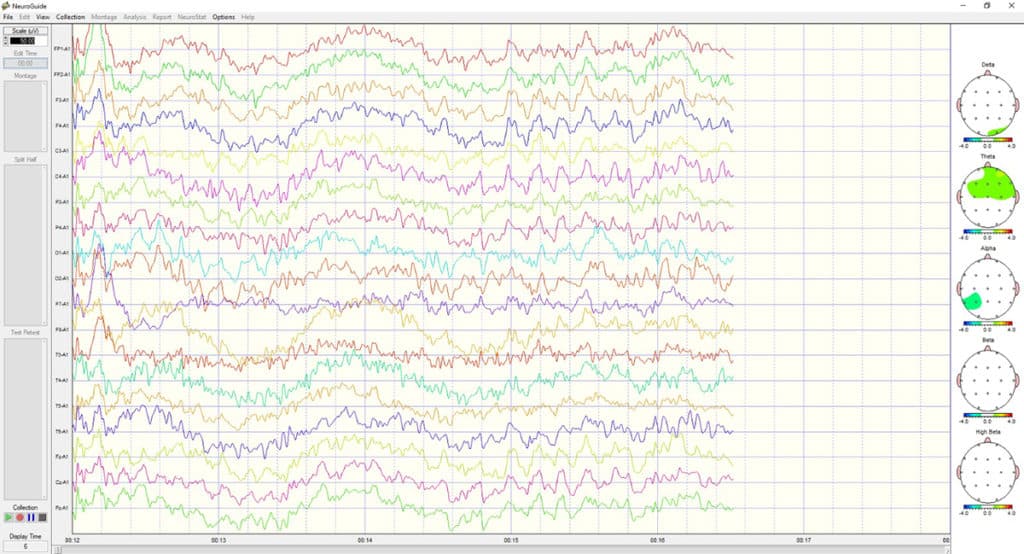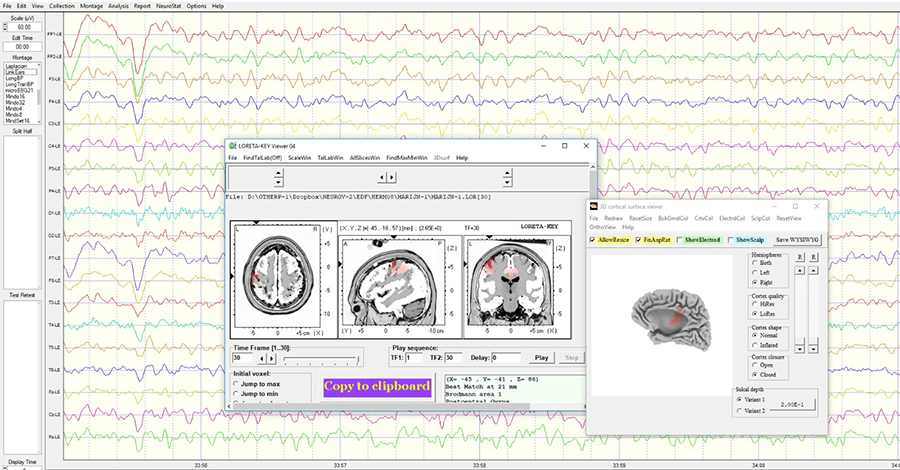The most important advantages of 21-channel neurofeedback
Compared to other systems, 21-channel neurofeedback has important advantages for our clients.
Compared to other systems, 21-channel neurofeedback has important advantages for our clients.
The 21 EEG channels work together to create a 3D image of the brain, which is not possible on systems with less channels. This means that we are not limited to training the surface of the skull. We can see with great precision which areas in the brain are deviant, and train exactly those.
Thanks to 19 measurements and 2 references, our system is very precise: we can tell exactly which type of waves is present and where. Thanks to this precision, our reports are often useful to medical professionals.
Efficient training means faster results. Thanks to a better insight in your brain’s functioning, we can make a precise training protocol and follow-up on it closely. Thanks to the 3D-imaging and great precision, with 21-channel neurofeedback, you’ll achieve your goals faster than with a system with less electrodes.
At NeuroVP, we practice scientific neurofeedback only. Its complete name is “21-channel QEEG Z-Scored Neurofeeback” and we’re happy to explain what this means.


By continuing to use the site, you agree to the use of cookies. more information
The cookie settings on this website are set to "allow cookies" to give you the best browsing experience possible. If you continue to use this website without changing your cookie settings or you click "Accept" below then you are consenting to this.